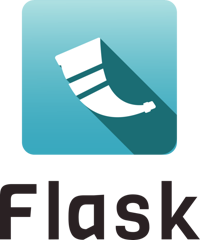How to contribute to Flask¶
Thank you for considering contributing to Flask!
Support questions¶
Please don’t use the issue tracker for this. The issue tracker is a tool to address bugs and feature requests in Flask itself. Use one of the following resources for questions about using Flask or issues with your own code:
The
#questionschannel on our Discord chat: https://discord.gg/palletsAsk on Stack Overflow. Search with Google first using:
site:stackoverflow.com flask {search term, exception message, etc.}Ask on our GitHub Discussions for long term discussion or larger questions.
Reporting issues¶
Include the following information in your post:
Describe what you expected to happen.
If possible, include a minimal reproducible example to help us identify the issue. This also helps check that the issue is not with your own code.
Describe what actually happened. Include the full traceback if there was an exception.
List your Python and Flask versions. If possible, check if this issue is already fixed in the latest releases or the latest code in the repository.
Submitting patches¶
If there is not an open issue for what you want to submit, prefer opening one for discussion before working on a PR. You can work on any issue that doesn’t have an open PR linked to it or a maintainer assigned to it. These show up in the sidebar. No need to ask if you can work on an issue that interests you.
Include the following in your patch:
Use Black to format your code. This and other tools will run automatically if you install pre-commit using the instructions below.
Include tests if your patch adds or changes code. Make sure the test fails without your patch.
Update any relevant docs pages and docstrings. Docs pages and docstrings should be wrapped at 72 characters.
Add an entry in
CHANGES.rst. Use the same style as other entries. Also include.. versionchanged::inline changelogs in relevant docstrings.
First time setup using GitHub Codespaces¶
GitHub Codespaces creates a development environment that is already set up for the project. By default it opens in Visual Studio Code for the Web, but this can be changed in your GitHub profile settings to use Visual Studio Code or JetBrains PyCharm on your local computer.
Make sure you have a GitHub account.
From the project’s repository page, click the green “Code” button and then “Create codespace on main”.
The codespace will be set up, then Visual Studio Code will open. However, you’ll need to wait a bit longer for the Python extension to be installed. You’ll know it’s ready when the terminal at the bottom shows that the virtualenv was activated.
Check out a branch and start coding.
First time setup in your local environment¶
Make sure you have a GitHub account.
Download and install the latest version of git.
Configure git with your username and email.
$ git config --global user.name 'your name' $ git config --global user.email 'your email'
Fork Flask to your GitHub account by clicking the Fork button.
Clone your fork locally, replacing
your-usernamein the command below with your actual username.$ git clone https://github.com/your-username/flask $ cd flask
Create a virtualenv. Use the latest version of Python.
Linux/macOS
$ python3 -m venv .venv $ . .venv/bin/activate
Windows
> py -3 -m venv .venv > .venv\Scripts\activate
Install the development dependencies, then install Flask in editable mode.
$ python -m pip install -U pip $ pip install -r requirements/dev.txt && pip install -e .
Install the pre-commit hooks.
$ pre-commit install --install-hooks
Start coding¶
Create a branch to identify the issue you would like to work on. If you’re submitting a bug or documentation fix, branch off of the latest “.x” branch.
$ git fetch origin $ git checkout -b your-branch-name origin/2.0.x
If you’re submitting a feature addition or change, branch off of the “main” branch.
$ git fetch origin $ git checkout -b your-branch-name origin/main
Using your favorite editor, make your changes, committing as you go.
If you are in a codespace, you will be prompted to create a fork the first time you make a commit. Enter
Yto continue.
Include tests that cover any code changes you make. Make sure the test fails without your patch. Run the tests as described below.
Push your commits to your fork on GitHub and create a pull request. Link to the issue being addressed with
fixes #123in the pull request description.$ git push --set-upstream origin your-branch-name
Running the tests¶
Run the basic test suite with pytest.
$ pytest
This runs the tests for the current environment, which is usually sufficient. CI will run the full suite when you submit your pull request. You can run the full test suite with tox if you don’t want to wait.
$ tox
Running test coverage¶
Generating a report of lines that do not have test coverage can indicate
where to start contributing. Run pytest using coverage and
generate a report.
If you are using GitHub Codespaces, coverage is already installed
so you can skip the installation command.
$ pip install coverage
$ coverage run -m pytest
$ coverage html
Open htmlcov/index.html in your browser to explore the report.
Read more about coverage.
Building the docs¶
Build the docs in the docs directory using Sphinx.
$ cd docs
$ make html
Open _build/html/index.html in your browser to view the docs.
Read more about Sphinx.
